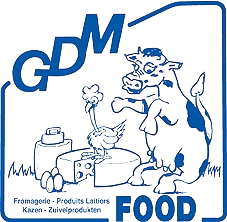What is freeze-drying?
The lyophilization or cryodessication is a technique of conservation developed in 1906, by the French, Arsène d' Arsonval and F. Bordas, at the biophysics laboratory of the Collège de France in Paris.
The process consists of removing the maximum amount of water from a liquid, pasty or solid product, using freezing and then vacuum evaporation of the ice without melting it.
There are three major phases in a freeze-drying cycle:
Freezing: This is the most critical phase of the cycle. The temperature drop must be very fast to obtain an ice without crystals; avoiding thus the damage of the cells and the denaturation of the sensitive organic molecules like proteins. The products are refrigerated to temperatures of -20°C to -80°C; the water is then transformed into ice.
Primary drying: This is the stage of sublimation (transition from solid to gas). Under vacuum and very low pressure, the product is heated to allow the interstitial ice to transform into water vapor. This without boiling effect (no water in liquid phase).
The secondary desiccation: This is the stage of desorption. By slightly modifying the pressure and temperature, the water molecules that remain trapped on the surface of the dried products are extracted.
At the end of the cycle, the freeze-dried products obtained are of very high quality. The shape, appearance, taste and benefits of the products are remarkably preserved. Their aromatic quality is far superior to that of dried or dehydrated products.
Freeze-dried products lose up to 99% of their moisture and retain nearly 95% of their nutritional value. In comparison, dehydrated products lose only 90-95% of their moisture and retain only 60% of their nutritional value.
The less water there is, the less spoilage reactions develop. The weight of freeze-dried foods can be reduced by 80 to 90% for vegetables and 60 to 80% for meat and fish.
If they are well stored, freeze-dried products can be kept for more than 25 years depending on the storage conditions and packaging used.
Just rehydrate the products with hot or cold water, respecting the dosage and the recommended time and it is ready to be consumed.
The biggest disadvantage of freeze-dried products is their cost that is justified by freeze-drying being an expensive process. It requires an important investment for the purchase of the machines, but also for their functioning. Indeed, these machines consume a lot of energy (+-2000 kWh per ton of water to be eliminated), cooling water and nitrogen.
